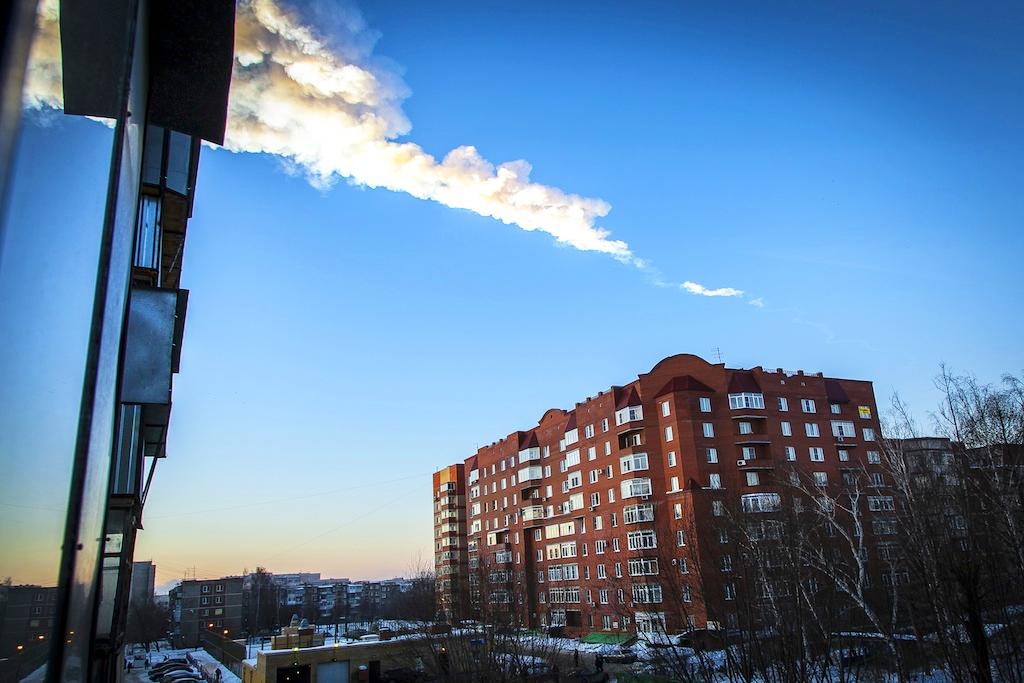Chelyabinsk meteor created dust belt in the stratosphere
A meteorite trail is seen above a residential apartment block in the Urals city of Chelyabinsk, on Feb. 15, 2013.
A meteor that struck Earth recently has created a new dust belt in Earth's stratosphere, according to NASA scientists.
The meteor, which measured 59 feet across and weighed 11,000 tons, exploded over Russia in February injuring numerous people.
The meteor released 30 times the energy of an atomic weapon and fired rocks at Chelyabinsk, a city in southwestern Russia.
Its trails were being closely watch by NASA both during and after the initial contact with Earth.
More from GlobalPost: Russia Meteor: We're all going to die! But when? And how?
The particles released by the meteor created a belt of dust that encircled the entire globe, traveling at 190 mph.
“Indeed, we saw the formation of a new dust belt in Earth’s stratosphere, and achieved the first space-based observation of the long-term evolution of a bolide plume,” said Gorkavyi.
Tracking the plume was a major feat for NASA scientists who said that such precise mapping of the dust would have been impossible in earlier times.
The dust belt itself is fading but three months after the crash, is still encircling the Northern Hemisphere.
The study will be published in the journal Geophysical Research Letters.
More from GlobalPost: Meteor sighted on the US East Coast
Every day, reporters and producers at The World are hard at work bringing you human-centered news from across the globe. But we can’t do it without you. We need your support to ensure we can continue this work for another year.
Make a gift today, and you’ll help us unlock a matching gift of $67,000!
